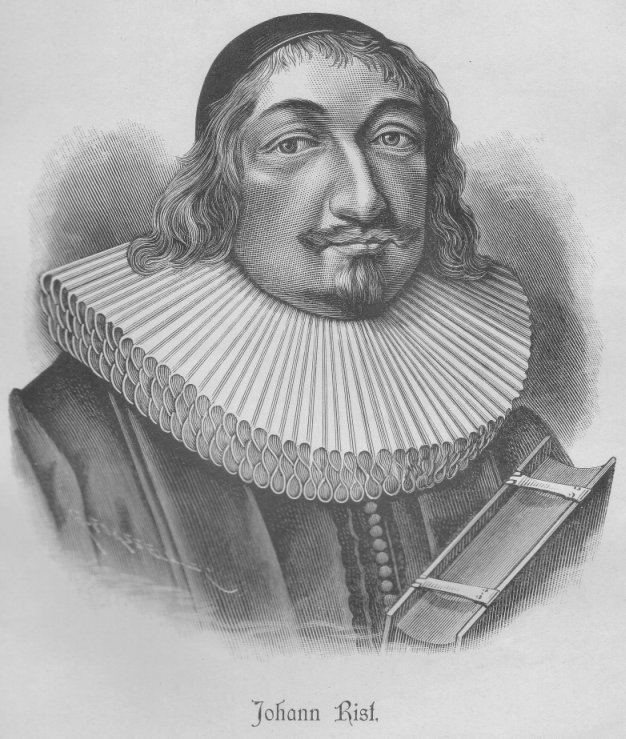Movements 6 | Cantata text anonymous | |
 | ||
Occasion 24th Sunday after Trinity Performed 7 November 1723 (1723-11-07): Leipzig Bible text Genesis 49:18
Revelation 14:13 Chorale "O Ewigkeit, du Donnerwort"
by Johann Rist
"Es ist genung"
by Franz Burmeister | ||
O Ewigkeit, du Donnerwort (O eternity, you word of thunder), BWV 60 is a church cantata written by Johann Sebastian Bach in Leipzig for the 24th Sunday after Trinity, first performed on 7 November 1723.
Contents
History and words
Bach wrote the cantata in 1723 in his first year in Leipzig for the 24th Sunday after Trinity. The prescribed readings for the Sunday were from the Epistle to the Colossians, a prayer for the Colossians (Colossians 1:9–14), and from the Gospel of Matthew, the story of Jairus' daughter (Matthew 9:18–26). The unknown poet sees her rising as foreshadowing the resurrection, expected with an attitude of fear and hope. Two allegorical figures, Furcht (Fear) and Hoffnung (Hope) enter a dialogue. The cantata is opened and closed by a hymn, verse 1 of Johann Rist's "O Ewigkeit, du Donnerwort", expressing fear, and verse 5 of Franz Burmeister's "Es ist genug". Also in symmetry, two biblical words are juxtaposed in movements 1 and 4. "Herr, ich warte auf dein Heil" (Genesis 49:18), spoken by Jacob on his deathbed, expresses hope against the fear of the chorale. Selig sind die Toten (Blessed are the dead)(Revelation 14:13) is the answer to a recitative of Fear.
Bach first performed the cantata on 7 November 1723.
Scoring and structure
The cantata in five movements is scored for alto, tenor and bass soloist, a four-part choir (only for the final chorale), horn, two oboes d'amore, two violins, viola, and basso continuo.
- Aria (alto, chorale – tenor): O Ewigkeit, du Donnerwort – Herr, ich warte auf dein Heil
- Recitative (alto – tenor): O schwerer Gang zum letzten Kampf und Streite! – Mein Beistand ist schon da
- Aria (alto – tenor): Mein letztes Lager will mich schrecken – Mich wird des Heilands Hand bedecken
- Recitative (alto – bass): Der Tod bleibt doch der menschlichen Natur verhaßt – Selig sind die Toten
- Chorale: Es ist genung (also: Es ist genug)
Music
The cantata is sometimes called a solo cantata, because solo voices perform all movements but the closing chorale. Bach had composed a dialogue three weeks before in Ich glaube, lieber Herr, hilf meinem Unglauben, BWV 109, as an inner dialogue, given to one singer. In this cantata he assigned Fear to the alto, Hope to the tenor, and has them sing three movements in dialogue. In movement 4, Fear is answered instead by the bass, the vox Christi (voice of Christ), with Selig sind die Toten.
In the first duet, a chorale fantasia, the alto (Fear) and the horn perform the chorale, accompanied by strings in tremolo, which John Eliot Gardiner connects to Monteverdi's agitated style (stile concitato). The tenor (Hope) contrasts with the line spoken by Jacob.
The second duet is a secco recitative, intensified to an arioso twice: Fear sings the word martert (tortures) as a chromatic melisma to short chords in the continuo, Hope stresses in a long melisma the last word ertragen (borne).
The third, central duet is dramatic and therefore not in da capo form, but closer to a motet, unified by the instrumental ritornellos. Three different sections are developed in a similar way: Fear begins, Hope answers, both argue, Hope has the last word. Even the instruments contrast, sometimes at the same time: the solo violin (with Hope) plays scales to dotted rhythms of the oboes d'amore and the continuo (with Fear).
The last duet is no longer between Fear and Hope, but Fear is met by the vox Christi quoting the consoling words from Revelation three times as an arioso, each time expanded.
The melody of the closing chorale, originally ascribed to Johann Rudolph Ahle, begins with an unusual sequence of four notes progressing by steps of major seconds (whole tones), together spanning the interval of a tritone. Alban Berg used Bach's chorale setting in his Violin Concerto.
In 1724 Bach wrote a chorale cantata on the complete chorale, O Ewigkeit, du Donnerwort, BWV 20, for the first Sunday after Trinity.
